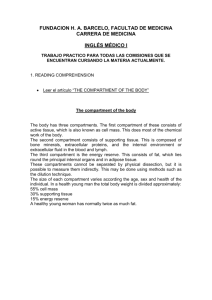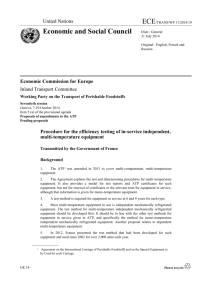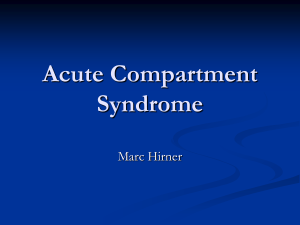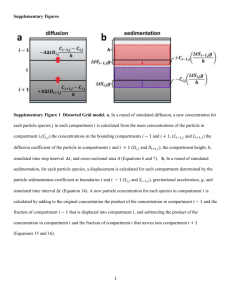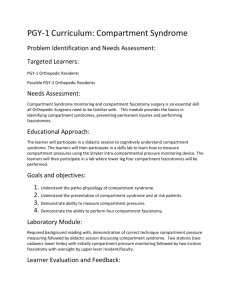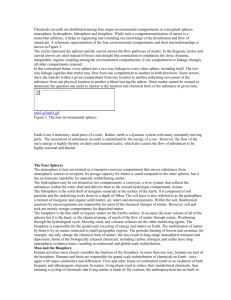Inland Transport Committee
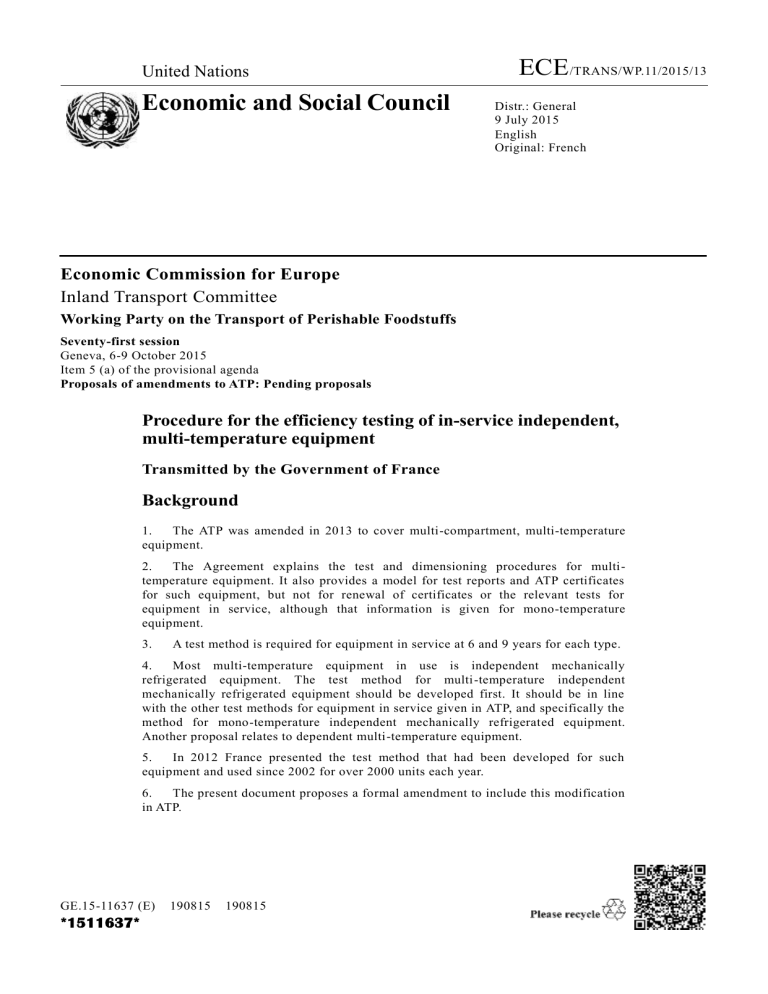
United Nations
ECE
/TRANS/WP.11/2015/13
Economic and Social Council
Distr.: General
9 July 2015
English
Original: French
Economic Commission for Europe
Inland Transport Committee
Working Party on the Transport of Perishable Foodstuffs
Seventy-first session
Geneva, 6-9 October 2015
Item 5 (a) of the provisional agenda
Proposals of amendments to ATP: Pending proposals
Procedure for the efficiency testing of in-service independent, multi-temperature equipment
Transmitted by the Government of France
Background
1. The ATP was amended in 2013 to cover multi-compartment, multi-temperature equipment.
2. The Agreement explains the test and dimensioning procedures for multitemperature equipment. It also provides a model for test reports and ATP certificates for such equipment, but not for renewal of certificates or the relevant tests for equipment in service, although that information is given for mono-temperature equipment.
3. A test method is required for equipment in service at 6 and 9 years for each type.
4. Most multi-temperature equipment in use is independent mechanically refrigerated equipment. The test method for multi-temperature independent mechanically refrigerated equipment should be developed first. It should be in line with the other test methods for equipment in service given in ATP, and specifically the method for mono-temperature independent mechanically refrigerated equipment.
Another proposal relates to dependent multi-temperature equipment.
5. In 2012 France presented the test method that had been developed for such equipment and used since 2002 for over 2000 units each year.
6. The present document proposes a formal amendment to include this modification in ATP.
GE.15-11637 (E) 190815 190815
*1511637*
ECE/TRANS/WP.11/2015/13
Proposal
7. The procedure proposed is the same as that used for mono -temperature equipment, with the proposed addition of extra reversibility tests.
Impact
8. This proposal is based on the test method for mono-temperature independent equipment. It adds only one test for the reversibility of compartments that will make it possible to limit the length of the test while retaining all its relevance.
9. The cost of this test is very similar to that of the test for mono-temperature equipment, although slightly higher as it requires more sensors and a longer time for instrumentation and analysis.
10. The environmental impact is significant, as servicing can be made compulsory, leading to better machine performance.
Proposed amendment to ATP
11. It is proposed to add to ATP a paragraph 6.6, as follows:
“6.6 Multi-compartment, multi-temperature equipment
For multi-temperature equipment, if the partitions are movable, they should be positioned so that the compartment surfaces are proportional to the individual capacities of the evaporators at 0° C.
The test prescribed in paragraph 6.2 is conducted simultaneously for all the compartments.
Measurements should be taken until the warmest temperature measured by one of the two sensors located inside each compartment reaches the temperature limit for that class.
For reversible equipment, once the previous measurements have been taken, the following additional operating tests should be conducted: the set points should be modified in turn according to the table below, and a proper maintenance of the temperatures of the compartments set to 0.0° C should be observed for at least 10 minutes. The set point temperature is ± 3° C. The temperature should rise wit h the doors closed, with the unit in use.
Set points for reversible equipment with two compartments
Compartment 1
-20° C
0° C
Set points for reversible equipment with three compartments
Compartment 2
0° C
-20° C
Compartment 1
0° C
-20° C
Compartment 2
-20° C
0° C
Compartment 3
0° C
-20° C
2/3 GE.15-11637
ECE/TRANS/WP.11/2015/13
The temperatures should be recorded; there is no maximum time limit for this test.
The unit may be stopped as soon as the additional tests have been completed. The sensors can then be disconnected and the defrosting system restored.
The equipment is considered compliant if:
For each compartment, the class temperature has been reached within the time limit shown in the table in 6.2. To define this time limit, select the lowest
(coldest) mean outside temperature from the two sets of measurements taken with the two outside sensors.
Any additional tests conducted are satisfactory.”
GE.15-11637 3/3
